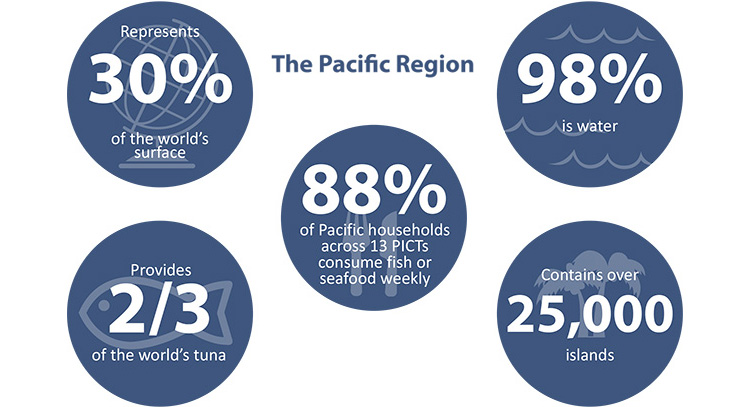Why do we need a Fisheries Science Vessel for the Pacific?

- Managing the sustainability of common marine resources is vital for the Pacific Island countries and territories that rely on them for key ecosystem services.
- Pacific tuna fisheries are of global importance, delivering two-thirds of the world's tuna resources, and it is crucial to maintain the sustainability of regional stocks. Regional fisheries decision making would be greatly weakened without the time series of data provided by continuous scientific experiments conducted onboard a suitable and reliable research vessel. Previously used vessels are in the process of being decommissioned due to their age.
- The largest oceanic region must play a major role in integrated ocean/ climate initiatives.
- Satellite observations need to be complemented by in-situ scientific monitoring to understand the complexity of the planet's largest ecosystem and its response to global warming.
- Properly designed and built for its environment and research goals, an adaptable modern sea-going platform will serve to benefit the Pacific people and the whole planet.
Adaptable, connected and clean
LOA: 43m
Range: >6,000 NM
Draft: <3.5m
Crew: 25
Range: >6,000 NM
Draft: <3.5m
Crew: 25
Adapted to the region's scale and geography
1
Efficient tuna pole and line fishing vessel
Support sustainable stock management through regional tagging programme
2
Efficient and safe pelagic fish capture
Enhance knowledge of tuna and associated species biology
3
Scientific laboratory spaces
Collect and analyse ocean ecosystem data

4
Capacity to operate mid-water trawl nets
Understand of the ocean food web and its responses to climate change
5
Capacity to collect essential physical oceanography parameters
Forecast changes in tuna ecosystems linked to climate variability
6
Scientific acoustic equipment associated with low radiated noise hull design
Understand the link between tuna fisheries and the ecosystem through seafloor mapping, seamount characterisation
7
Powerful hydraulic crane
Reduce reliance on regional port facilites through vessel operation and deployment autonomy.
8
Auxiliary boats
Diving surveys, coastal water surveys
9
Computer network and communication
Real-time sharing of research results, regional capacity building First-response capability for disaster relief
10
Efficient and low footprint vessel
Electric-diesel engines compatible with future energy upgrades
11
Removable 20' container
Customisable for specific research needs (Labs, diving) Cargo for disater relief
The Pacific research vessel will have the capacity to complete many missions
- Enhance the sustainability of the biggest tuna fishery, implementing annual tuna tagging and sampling research cruises, download mission sheet download
- Monitoring the evolution of the largest oceanic ecosystem, implementing annual pelagic ecosystem monitoring research cruises, download mission sheet download
- Deep sea ecosystem monitoring, preserving deep coastal resources, download mission sheet download
- Climate impact monitoring, instrument deployment for Ocean Observation network, download mission sheet download
- Increase country food security, coastal FAD and open ocean aquaculture sea cage mooring deployments to increase country food security, download mission sheet download
- Improve navigation safety, implementing bathymetry surveys, download mission sheet download
- Promote ocean expertise, promote and participate to Pacific country capacity building, download mission sheet download
Download the full document download
Region, Partners and Collaborators

